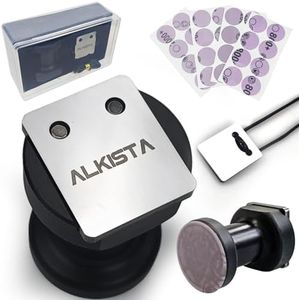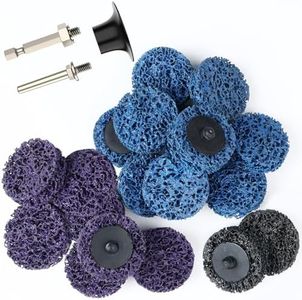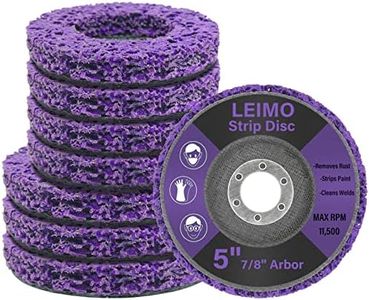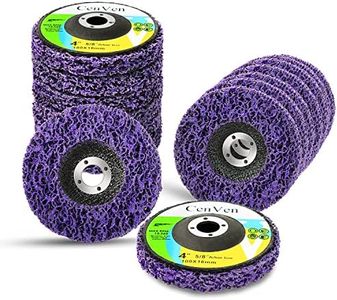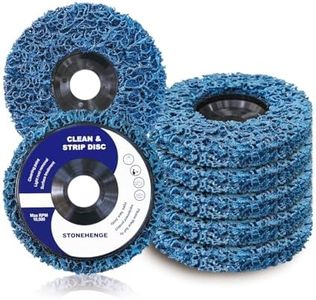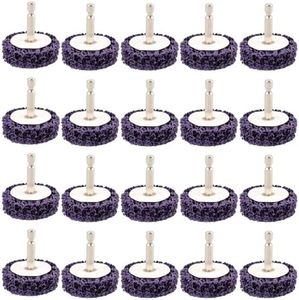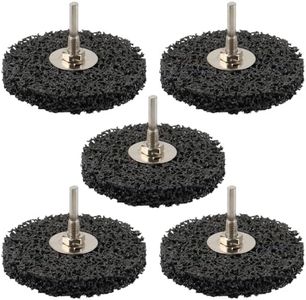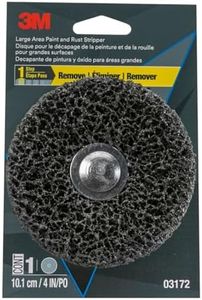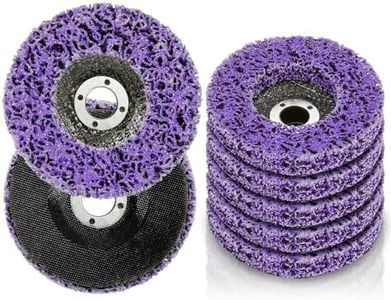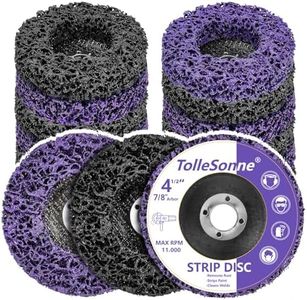We Use CookiesWe use cookies to enhance the security, performance,
functionality and for analytical and promotional activities. By continuing to browse this site you
are agreeing to our privacy policy
10 Best Paint Stripper For Metal
From leading brands and best sellers available on the web.By clicking on a link to a third party's website, log data is shared with that third party.
Buying Guide for the Best Paint Stripper For Metal
Choosing the right paint stripper for metal can make the task of removing old paint efficient and safe. The best product will depend on your specific project: the type and size of metal object, how many layers of paint you need to remove, and your tolerance for chemical odors or mess. Before shopping, consider whether you want a fast-acting finish remover, something gentle for indoor use, or a formula that's easy to apply and clean up. It’s also important to ensure that the stripper is suitable and safe for the type of metal you’re working with, as some products are more aggressive and could damage delicate surfaces.Type (Gel, Liquid, Paste, Aerosol)The form of paint stripper influences how easily it will adhere to vertical or intricate metal surfaces. Gels and pastes are thicker and ideal for surfaces where you want the product to stay put and thoroughly soften the paint; they’re less likely to drip and are good for detailed or vertical pieces. Liquids and aerosols work well on flat surfaces or when speed is important, as they often spread and act quickly but may run off more easily. Choose the form based on how much control you need; for vertical, ornate, or small items, gels and pastes are best, while for large, flat pieces, a liquid or aerosol may be faster.
Active IngredientsPaint strippers work by using chemicals to soften and break down paint. Common active ingredients include methylene chloride, NMP (N-Methyl-2-pyrrolidone), and more natural options like citrus terpenes. Methylene chloride acts very fast but can be harsh and pose health risks; it’s typically used for tough jobs and in well-ventilated areas. NMP is milder but slower and still effective, making it suitable for indoor or less urgent projects. Citrus-based or bio-based formulas are friendlier for indoor use and have a lower odor, but may take longer and require more elbow grease. Consider how fast you want the job done, the importance of safety and ventilation, and your work environment to choose the best fit.
Compatibility with MetalNot every paint remover is safe for every type of metal. Some aggressive chemical strippers can cause discoloration, pitting, or other damage, particularly to soft metals like aluminum or delicate finishes. Before choosing a stripper, check the label for compatibility; look for one that mentions your metal type or is marked as ‘non-caustic’ or ‘metal-safe.’ If working on a valuable or intricate item, a milder formula is the safest bet, while tough jobs on industrial-grade steel may allow for stronger products. Your need—whether preserving fine metalwork or clearing stubborn coatings from hardware—will guide you.
Speed of ActionThe time it takes a paint stripper to work can be critical if you’re aiming to finish quickly or are working in a less ventilated space. Fast-acting products can remove multiple layers in minutes, but often come with stronger odors and require careful handling. Slower formulas may need to sit for an hour or more, which makes them safer to use indoors or on delicate surfaces, but will extend your work time. Choose a fast-acting stripper for speed if safety isn’t a big concern, or a slow-acting one for precision and safety on delicate items.
Odor and Ventilation NeedsSome paint strippers have strong chemical odors, and can irritate your eyes, nose, and skin. Products with low odor or that are labeled for indoor use are preferable if you’re working inside or in poorly ventilated areas. For outdoor projects or in garages with open doors, a standard or fast-acting formula might be fine. Think about where you'll work: if inside, prioritize low-odor, gentle formulas; if outside, you have more flexibility.
Ease of CleanupAfter the paint has been removed, you’ll need to get rid of residue left behind by the stripper. Some products are water-based and clean up easily with soap and water, while others require solvents or careful removal to avoid residues that prevent new paint from adhering. If you prefer a less messy process or don’t want to use harsh cleaners afterward, look for water-cleanup formulas. For stubborn, thick coatings, you may need to accept a slightly more involved cleaning process. Make your choice based on how much post-stripping cleaning you’re willing to do.
